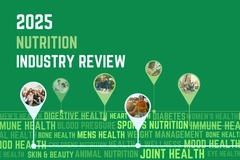Cow milk vs. fermented dairy: Experts find differences in bacteria and protein diversity

The nutrition industry is milking the rise of sustainable dairy alternatives based on yeast fermentation, but a new US study led by University of Nevada, Reno, researchers questions how similar they are. The results reveal differences between cow whey protein and its biomanufactured counterpart, including variances in microbial diversity.
The study reveals that while both versions share a core protein component, the fermentation-based option has fewer types of protein and different sugar structures, known as N-glycans, which may affect how the proteins interact with gut bacteria.
“Functionally, they behave like whey and taste like whey,” says Steven Frese, an assistant professor in the Department of Nutrition at the University’s College of Agriculture, Biotechnology & Natural Resources.
“But at the molecular level, they are decorated differently, and those decorations, called post-translational modifications, appear to influence how our gut microbes respond.”
Key protein differences
Biotech scientists are genetically modifying yeast to behave like biological factories that produce proteins similar to those found in milk. A growing pool of food start-ups features these proteins in products such as dairy-free ice cream and cheeses, often marketed as “identical to” or “one-to-one replacements” for dairy proteins.
Generally, fermentation-based dairy is considered more sustainable due to its significantly lower land, water, and feed footprint compared to traditional dairy operations. Additionally, it has eliminated the need for growth hormones and antibiotics.
The authors of the paper in Microbiology Spectrum discovered that proteins in both types of dairy are mostly made up of β-lactoglobulin, the main protein in cow’s milk whey. However, the cow version included a wider variety of proteins, including α-lactalbumin, albumin, and casein.
Meanwhile, the yeast-derived whey was nearly 98% β-lactoglobulin, with “very little diversity” in its protein makeup.
Moreover, when tested in a lab “mini-gut,” cow’s milk whey resulted in a more diverse mix of gut bacteria, while the yeast version led to lower microbial diversity.
“Lower diversity isn’t necessarily bad,” Frese concedes. “But what matters is that we now know these proteins are not identical in how they interact with our biology. That is a conversation the food and nutrition industry needs to have.”
Differences in microbes
The research team set out to understand how structural differences in whey protein might affect the human body. They did this in a three-part study: analyzing protein composition, examining the sugar structures attached to the proteins, and testing microbiome responses.
The team compared purified samples of store-bought cow’s milk whey protein and commercially available synthetic whey at the university’s Proteomics Center. They broke the proteins into smaller pieces and used mass spectrometry to identify them.
This process confirmed that the cow’s milk whey had a greater variety of proteins compared to its yeast-derived counterpart, even though both types were mostly β-lactoglobulin.
Collaborating with glycan chemistry experts in Turkey, the team also examined the sugar molecules attached to the proteins. With advanced mass spectrometry, they discovered that the yeast-derived proteins had fewer and structurally different sugar molecules, which they believe might impact how the body processes them.
Finally, using a fecal fermentation lab model that simulates human digestion, researchers tested how the proteins affected gut bacteria. The system introduced proteins into cultured fecal samples representing different gut microbiomes.
The cow’s milk whey consistently promoted a more diverse and beneficial mix of gut bacteria across all samples, while the yeast-derived whey resulted in less microbial diversity.
“This research wasn’t about saying one protein is better than the other,” underscores Frese. “It was about understanding whether they are truly interchangeable. If we are going to introduce novel proteins into the food supply, we need to understand how they behave once they are in the body.”
The research team also included scientists from the Çanakkale Onsekiz Mart University, Hacettepe University, and Karabük University, all based in Turkey.












